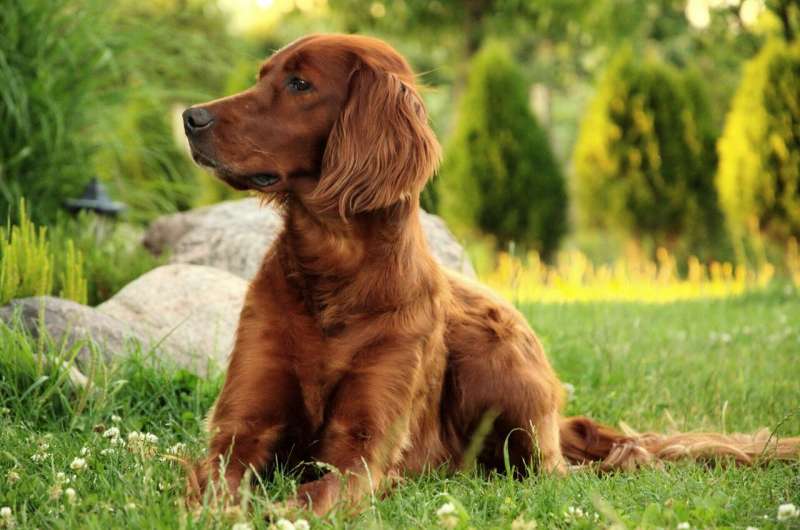Newly discovered genetic element adjusts coat color in dogs

Why are Irish Setters so red? Geneticists at the UC Davis School of Veterinary Medicine now have an answer for why some dogs have more intense coat colors than others.
While their wolf ancestors are muted in color, domestic dogs have been bred into a variety of hues from white and golden through brown to black. Similarly to other mammals, canine coat color comes from two pigments: yellow (pheomelanin) and black (eumelanin). These pigments are controlled through pigment-switching genes MC1R (melanocortin 1 receptor) and agouti signaling protein (ASIP). For example, solid yellow or red dogs have a mutation in MC1R so they only make pheomelanin.
"Much is known about canine coat colors but one thing that was unclear is why dogs with the same variants in the MC1R gene have different shades of red," said Danika Bannasch, professor in the UC Davis School of Veterinary Medicine and senior author on a paper describing the work published Jan. 9 in the journal Genes.
Graduate student Kalie Weich, Bannasch and colleagues carried out a genome-wide association study with samples from Nova Scotia Duck Tolling Retrievers. "Tollers" as a breed vary in color from bright golden red to a dark coppery color.
Copy number variant influences color gene
The researchers found a region of DNA on the dog chromosome 15 that can have multiple copies related to coat color. This copy number variant doesn't encode a gene itself, but it does influence the gene KITLG, which is related to hair color (a single change near the KITLG region in humans is associated with blonde hair).
When they looked across a range of breeds, dogs with a higher number of copies of this region had more intense coat colors.
"The interesting thing is that variation in the domestic dog is to darker pigment," Bannasch said. Wolves have just a single copy on each chromosome 15.
Copy number appears to affect color intensity through the distribution of pigment along the hair. Animals with a low copy number have hair that is light at the root and darkens towards the tip, while animals with a high number of copies have pigment evenly distributed all the way along the hair.
There is still more to learn about dog coat color. For example, copy number does not seem to correlate with coat color in Golden Retrievers and Labrador Retrievers, so there must be other genetic elements involved.
More information: Weich et al, Pigment Intensity in Dogs is Associated with a Copy Number Variant Upstream of KITLG, Genes (2020). DOI: 10.3390/genes11010075
Provided by UC Davis


















